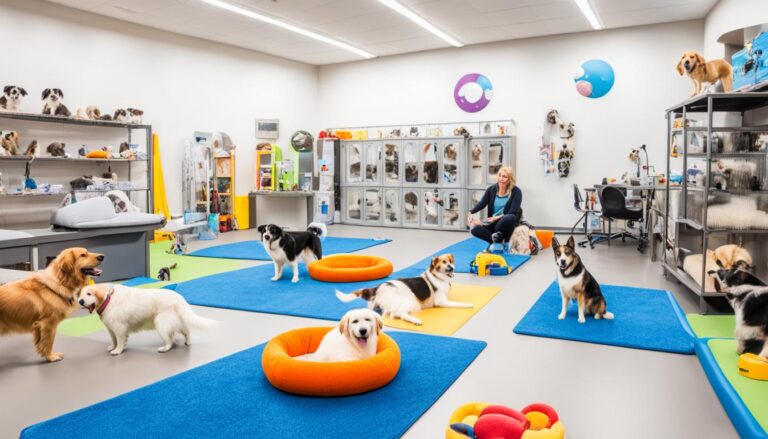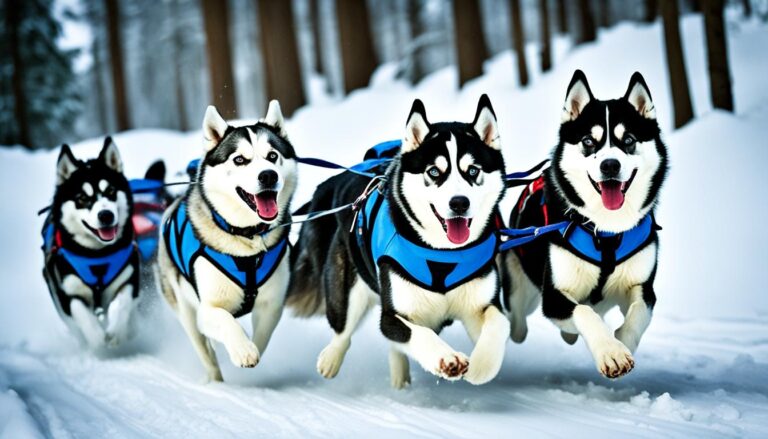how dog obedience training is done
Ever wondered why some dogs listen to their owners well, while others don’t? The answer is in effective dog obedience training. This process makes pets well-behaved and strengthens their bond with humans.
Dog obedience training starts early, best during puppyhood. But it can still work at any age. Dogs are smart like two-year-old kids and can learn up to 250 words1. This makes them great for training.
There are two main ways to train dogs: aversive and reward-based1. Reward-based training is popular because it uses positive reinforcement. It encourages good behavior without making dogs scared.
Training doesn’t need to be long. Short sessions of about 15 minutes work best2. This keeps dogs from getting bored or overwhelmed. It makes training fun and effective.
Key Takeaways
- Dog obedience training enhances the bond between dogs and owners
- Training can start at any age but is most effective when begun early
- Dogs have intelligence levels similar to two-year-old children
- Reward-based training is a popular and effective method
- Short, frequent training sessions are more effective than long ones
- Consistency is key in reinforcing desired behaviors
Understanding Dog Obedience Training Fundamentals
Dog obedience training is key to having a well-behaved pet. Let’s look at the main parts of training puppies and changing dog behavior.
The Importance of Early Training
Training early helps build good habits. Puppies can learn basic commands in 6-8 weeks with regular training. Adults might need 8-12 weeks because of their past habits3. Start training a puppy as soon as they come home, usually at 8 weeks old3.
Types of Dog Intelligence
Dogs have three kinds of smarts: instinctive, adaptive, and working/obedience. Knowing this helps match training to what your dog is good at.
| Intelligence Type | Description | Training Focus |
|---|---|---|
| Instinctive | Breed-specific behaviors | Channeling natural tendencies |
| Adaptive | Problem-solving skills | Mental stimulation exercises |
| Working/Obedience | Ability to learn commands | Basic obedience training |
Common Training Methods: Aversive-based vs. Reward-based
There are two main ways to train dogs: with aversive or reward methods. Reward training works as well as, or even better than, other ways4. It also makes a stronger bond with the dog.
Training should be short and fun. For puppies, aim for 5-10 minutes, 2-3 times a day. Adults can do about 10 minutes34. It’s important to use commands during daily activities like eating3.
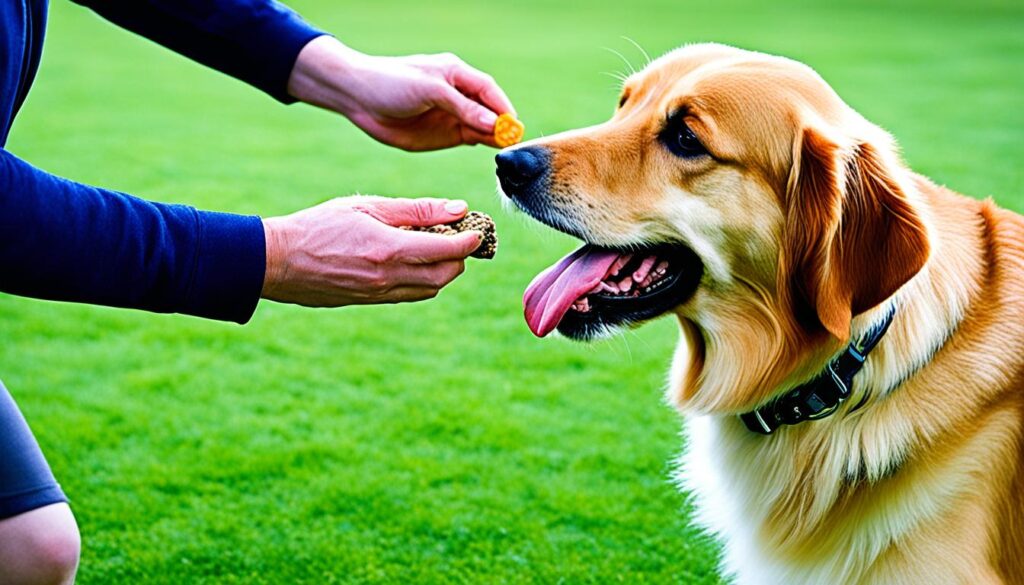
Training a dog is a team effort between you and your pet5. With patience, consistency, and the right methods, you can train your puppy well. This will lead to better behavior from your dog.
Essential Commands Every Dog Should Know
Dog obedience training is key to having a well-behaved pet. Experts agree on basic commands all dogs should learn. These commands make your dog safer and behave better in different situations.
Core Commands for Obedience
The American Kennel Club says five commands are must-knows: sit, come, stay, leave it, and drop it. These are the start of most training and are important for beginners6.
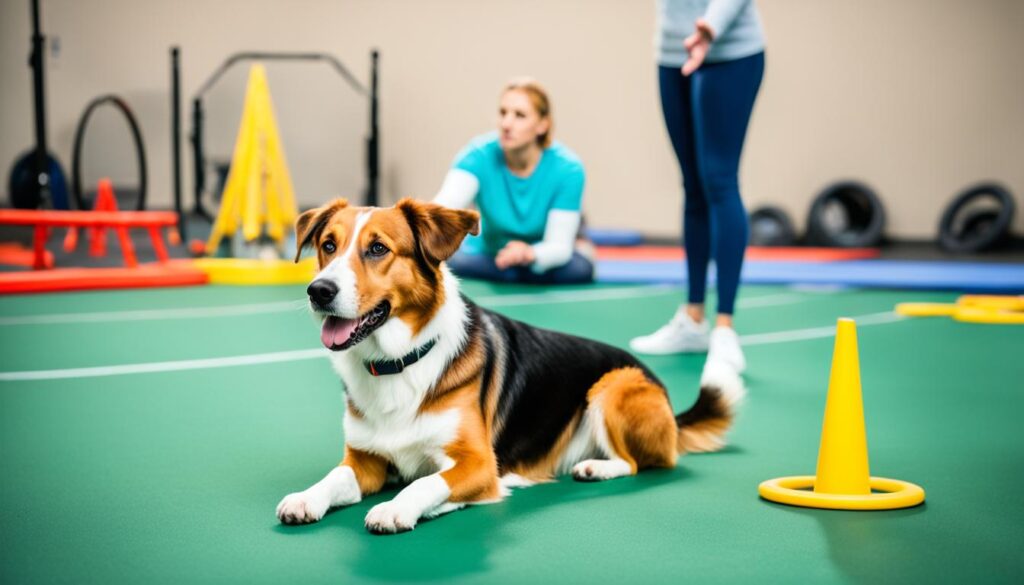
Sit
The “sit” command is a basic one. It’s often the first command taught. To teach it, hold a treat near your dog’s nose and move it up. This makes their bottom go down. Give them the treat right away when they sit7.
Come
The “come” command is key for your dog’s safety, like in public. Start with your dog on a leash, call them, and say “come” while pulling the leash a bit. When they come to you, praise and give a treat. Make the distance longer as they get better76.
Stay
To teach “stay,” mix it with “sit.” Have your dog sit, then step back. If they stay put, give them a reward. Make the time and distance longer over time76.
Leave It and Drop It
These commands stop bad behaviors. For “leave it,” put a treat on the floor and cover it. Give them a better treat when they ignore it. For “drop it,” offer a toy, then give them a treat when they drop it6.
| Command | Purpose | Training Tip |
|---|---|---|
| Sit | Basic control | Use treat to guide |
| Come | Safety recall | Start with leash |
| Stay | Impulse control | Increase duration gradually |
| Leave It | Avoid hazards | Use better treat as reward |
| Drop It | Release objects | Trade for high-value treat |
Remember, being consistent and using positive rewards is key in training dogs. If you’re having trouble, professional trainers can help. With time and effort, your dog will learn these commands, making your relationship with them happier and safer8.
How Dog Obedience Training is Done: Step-by-Step Process
Dog obedience training is a rewarding journey. It needs patience and consistency. We’ll show you the key steps to train your dog with positive reinforcement.
https://www.youtube.com/watch?v=kqV4PQNJ8lI
First, get your dog, treats or toys for rewards, and leashes for training9. Start with short, frequent sessions of about 15 minutes to keep your pup interested910. Try to have two to three training periods a day, especially for puppies who get bored easily10.
Begin with simple commands like “sit” and “down.” For “sit,” hold a treat near your dog’s nose, then move it up and back over their head. They will sit down to follow the treat9. Give them the treat and praise right away when they sit.
To teach “down,” start with your dog sitting. Hold a treat near their nose, then lower it to the ground. They will lie down to get the treat9. Reward them right away when they’re down.
Then, teach the “stay” command. Use verbal cues and hand signals and keep eye contact with your dog9. Start with short leads, then slowly increase the distance and time they have to stay.
Teach the “come” command after your dog knows “sit,” “down,” and “stay”9. Begin in a quiet place and add distractions later. Always practice off-leash in safe, fenced areas9.
Being consistent is crucial in reward-based obedience training. It usually takes at least 21 days of regular training to see progress11. Try to get success in each exercise at least four times in a row to make sure your dog gets it11.
With patience and positive reinforcement, you’ll soon have a well-behaved dog. Remember, every dog learns at their own speed. Celebrate the small wins along the way!
Choosing the Right Training Approach for Your Dog
Choosing the right training method for your dog is key. We must think about their unique personality and needs for success. Experts suggest mixing different methods that fit each dog12.
Assessing Your Dog’s Personality and Needs
Dogs are all different, reacting in their own ways12. Some do well in groups, others like one-on-one. Training classes are great for new owners or those with specific issues13. Private sessions offer a custom approach, from basic obedience to full training programs14.
Positive Reinforcement Techniques
Positive reinforcement works well for teaching new behaviors and building a strong bond13. It uses treats, praise, and play to encourage good actions. A calm setting and knowing your dog’s body language are important for success13.
Clicker Training Basics
Clicker training is a type of positive reinforcement that uses a click to mark good behavior12. It’s great for clear communication in training14. By linking the click with rewards, we can shape our dog’s actions and solve problems without punishment13.
FAQ
Why is dog obedience training important?
When should I start training my dog?
What are the main training methods?
What are the essential commands every dog should know?
How is dog obedience training done step-by-step?
How do I choose the right training approach for my dog?
What resources are available for dog obedience training?
Source Links
- https://www.webmd.com/pets/dogs/dog-training-obedience-training-for-dogs – Dog Training: Obedience Training for Dogs
- https://www.thesprucepets.com/steps-to-train-your-dog-1118273 – Dog Training 101: An Ultimate Guide to Fixing Common Behavior Issues
- https://hotdiggitydogresort.com/blog/step-by-step-basic-dog-obedience-training-for-new-owners – Step-by-Step Basic Dog Obedience Training for New Owners
- https://be.chewy.com/sit-stay-and-beyond-weve-got-the-essential-guide-to-basic-dog-obedience-training/ – Your Essential Guide to Basic Dog Obedience Training
- https://4h.extension.wisc.edu/files/2021/05/The-Basics-of-Training-Your-Dog.pdf – Untitled-4
- https://k9maniadogtraining.com/dog-obedience-training-commands-every-dog-owner-should-know/ – Dog Obedience Training Commands Every Dog Should Know
- https://www.servicedogtrainingschool.org/blog/dog-training-commands-every-dog-should-know – Dog Training Commands Every Dog Should Know
- https://www.dogseechew.in/blog/20-essential-dog-training-commands-orders-list-basic-to-advanced – 20 Essential Dog Training Commands – (Basic to Advanced) | Dogsee
- https://www.instructables.com/Basic-Obedience-Training-for-Dogs/ – Basic Obedience Training for Dogs
- https://www.thesprucepets.com/start-dog-obedience-training-program-1118245 – Do-It-Yourself Dog Training Program
- https://www.mainedogtrainer.com/blog/four-steps-of-the-dog-training-process – Four Steps of The Dog Training Process
- https://happydogtraining.info/general-information/how-to-train-a-dog/ – How to Train a Dog
- https://ruffacademywi.com/the-ultimate-guide-to-dog-obedience-training/ – The Ultimate Guide to Dog Obedience Training
- https://www.olk9md.com/choosing-the-best-training-for-your-dog/ – What Dog Training Program is Best for Your Dog? | OLK9MD

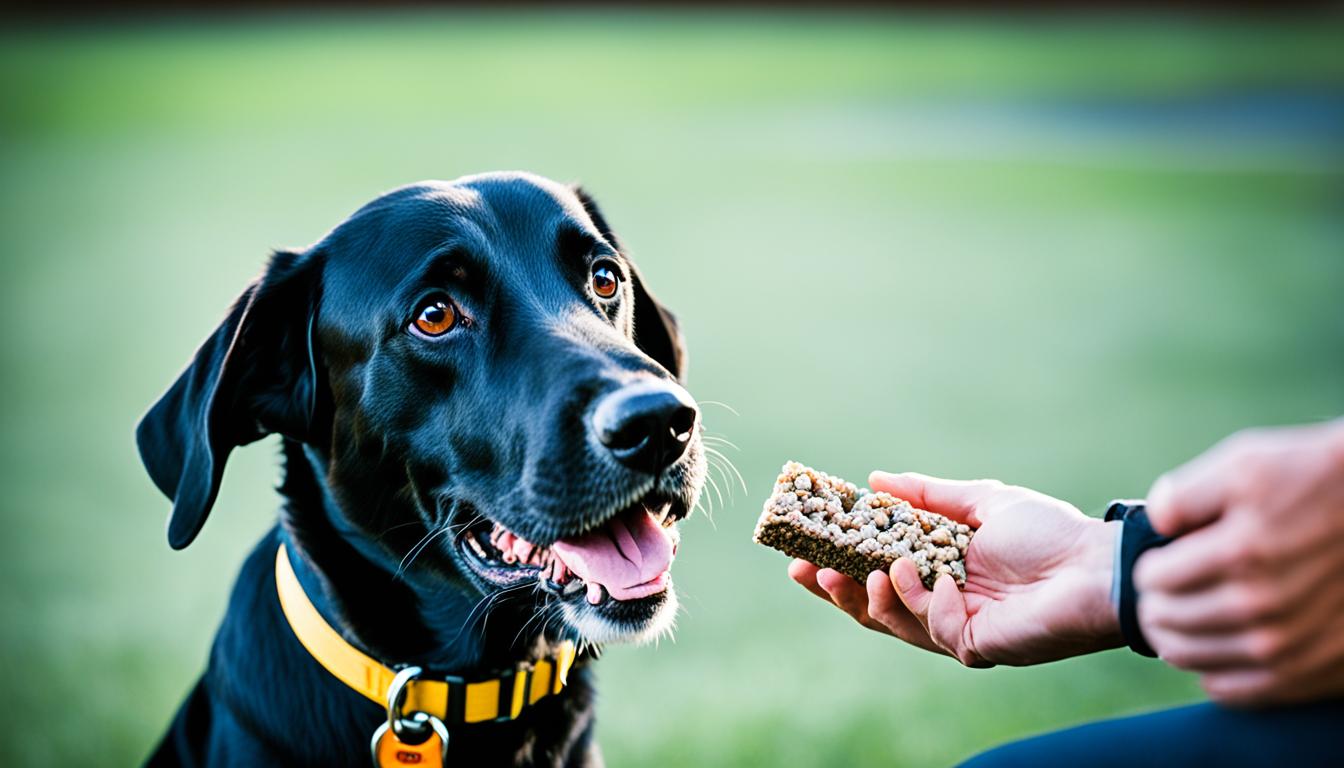
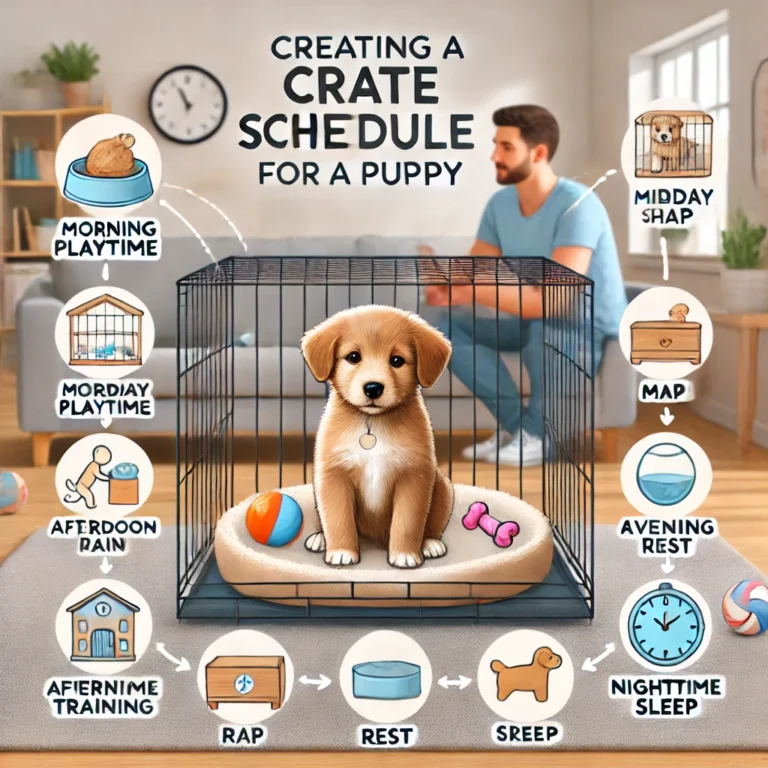
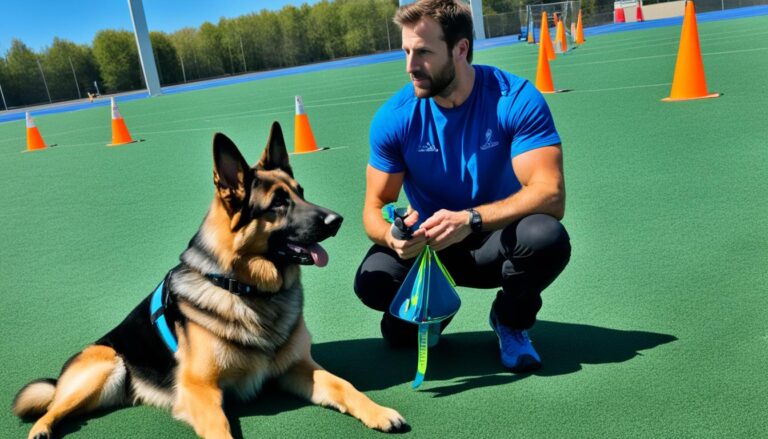
![Training a Puppy at Night]](https://quitepuppy.com/wp-content/uploads/2024/07/bec12dd0-874f-4260-a979-20199f474627-1-768x439.webp)
